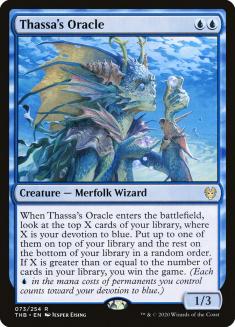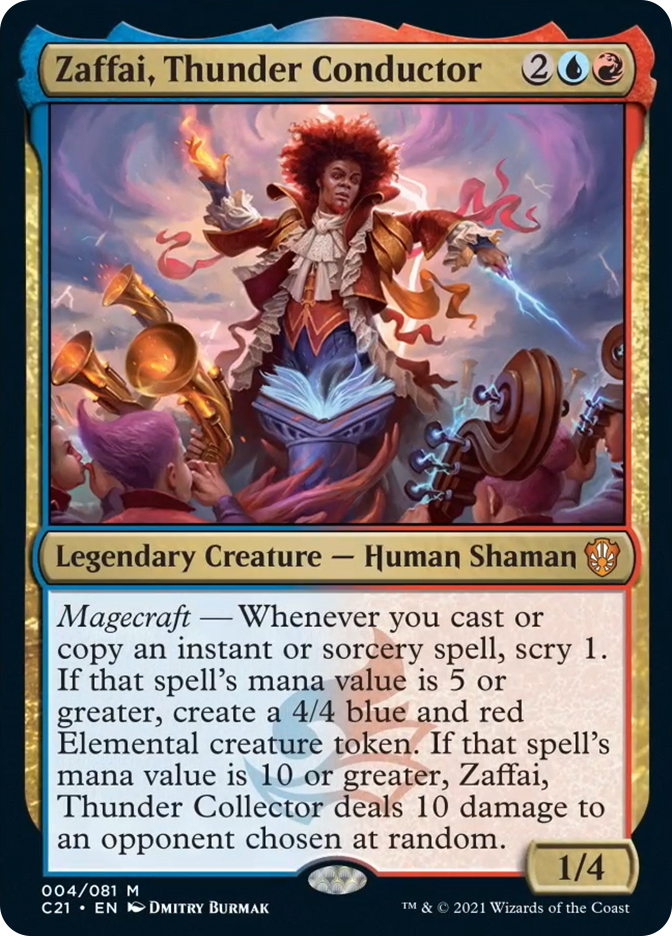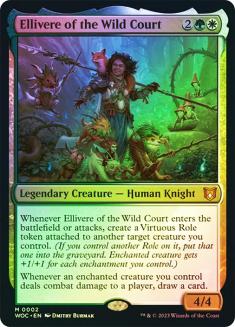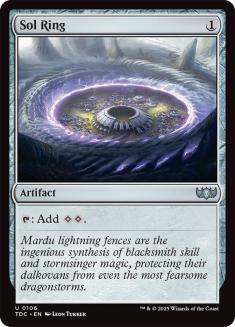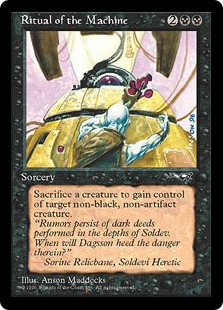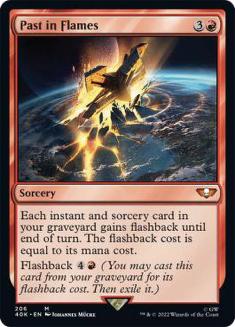“What power level is your deck?” That’s the question most Commander players hate to hear.
“It’s a 7.” That’s the most dreaded answer.
What the heck does that “7” even mean? Over the years, Commander has evolved as a format, but the way we measure power level really hasn’t. The infamous 1-10 scale has dug its claws into our power level perception and recently found its way back into community discussion. If the original 1-10 scale no longer holds water, how do we accurately measure decks in the age of Jeweled Lotus, Smothering Tithe, Dockside Extortionist, and Thassa’s Oracle?
cEDH
When discussing power level, cEDH becomes an interesting topic to tackle. When entering a game of cEDH, there is already a set expectation of what the power level will be. In a game of cEDH, the main goal is victory as quickly and efficiently as possible. The expectation has already been established before you even sit down at the table. There are no surprises. If it’s legal in the format, it’s good to play.
When someone sits down at a table to play Commander and a pod member says that they are playing cEDH, you very quickly understand if this is the pod for you or not. Because it lives in the realm of extremes, it is already easily identifiable on our scale, old or new.
The Precon Problem
As we reevaluate our perception of the 1-10 scale, we first have to reevaluate how we view preconstructed decks. Precons are often seen as in the basement of power level. They are great introductory decks for the format and are meant for new players…right?
Well, not exactly. I hate to come across as an old man yelling at the clouds, but precons have changed since their inception. They’ve grown more and more complex and more powerful over the years. This isn’t a bad thing by any means. It’s exciting to see increasing complexity in preconstructed decks, as it entices enfranchised players to take a stab at something outside their wheelhouse. This increase in power and complexity has even led to the creation of Starter precons in 2022. These starter precons are still commander decklists, but each strategy and list is a bit more digestible for new players than, say, a Zaffai, Thunder Conductor storm precon or the Ellivere of the Wild Court Roles precon from Wilds of Eldraine.
Precons are no longer at the bottom of the perceived power scale, so we need to adjust accordingly. “It’s just a precon” has become a phrase I jokingly say to my friends as I’ve creamed them with a precon against tuned, constructed decks. While, yes, this can be situational, as I’ve lost games with the very same precon, the focus should rely more on synergy. Magic has experienced a large framework shift in terms of card power. We see it in precons and Standard sets with cards containing novels of text, full of incredibly potent keywords and abilities. This shift in play power must therefore mean we need a shift in how we perceive power. In a world where we seldom see hodgepodge, randomly put together decks, how do we make the jump from the preconstructed decks of today to the rest of the Commander ecosystem?
The In-Between
Here we are, in the midst of the fuzziness, the cause of the great “7” dilemma. These in-between decks are some of the hardest to define.
I find the ten-point scale to be rather useless when it comes to discussing these middle decks. Instead, the best way to define these decks’ power level comes down to intent. Sure, you can attempt to define power level via synergies, card advantage, or mana acceleration; however, some recent precons have incredibly high synergies, yet don’t live in this realm. As for mana acceleration, a deck can contain incredibly powerful pieces but not use them in a way that takes them to the same realm as cEDH.
This is where social expectations come into play. Decks in this realm have higher amounts of synergy than their precon counterparts, yet lack the cutthroat efficiency of cEDH. They can run some of the same pieces and win conditions as these decks, but play completely differently. It is all at the discretion of the person playing it.
The comical description of a deck being a 7 is a way for Commander players to avoid the extremes of precon or cEDH: not too weak but not overbearingly powerful, smack dab in the middle. But saying your deck is a 7 has become an extreme in itself, almost like its own Commander subcategory.
When playing against people in this in-between power level, I like to ask a set list of questions as opposed to its level or winning turn. “What does your deck like to do?” and “How does your deck win?” are two useful questions for pregame discussions, as they clearly lay out expectations without revealing too much of a deck’s strategy.
This doesn’t require you to withhold plays or play down; it simply asks you to be honest in a dialogue. However, even this dialogue can cause some confusion amongst players. How much information is too little? Must players divulge all?
The Pregame Conversation
Pregame conversations are incredibly important when playing amongst strangers, or even when making content. No one wants to watch a slow game that takes four hours, just as no one wants to watch a ten-minute game where no one got to play. Pregame conversations can prevent these faux pas from happening, and yet we still struggle with accurately describing our decks. Why?
The pregame conversation has essentially become a crutch the Commander community leans on when talking about power level. The phrase has almost lost its meaning, just like the phrase “run more removal”. We say it, but we don’t really understand it. We don’t challenge it, but take it at face value and lean on an out-of-date numeric system while trying to define an ever-changing format. What is supposed to happen in these conversations? Why are some players against them?
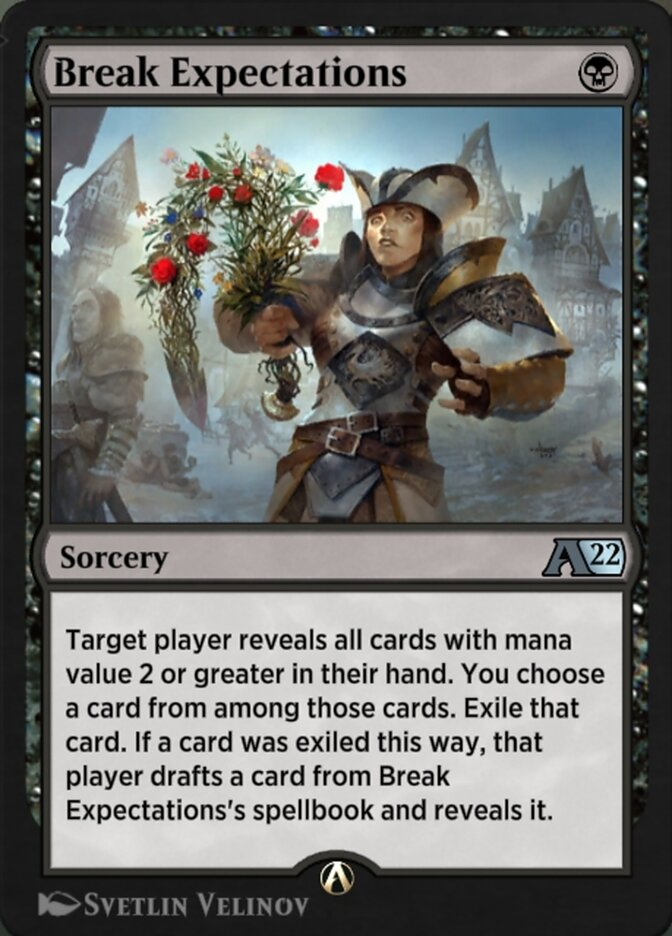
Well, pregame conversations are meant to establish expectations for the game to come. This is largely where the social aspect of Commander comes into play. After a successful pregame conversation, cards aren’t surprises to players. This element of surprise, however, is a point of contention amongst players. Some find that explaining one’s deck gives opponents a strategic advantage; if you explain your win con to the pod, after all, then your opponents can look for it and nuke it as soon as it hits the battlefield. Others argue that this is babying opponents, playing down their decks in order to make people feel as though they participated. The point of playing a game is to win, right?
Well, in part, yes. While victory is the goal in 1v1 formats (and other competitive format variants), in non-cEDH Commander, it takes a backseat to social interaction and meaningful participation. Sure, victory is still a goal, but it is not the sole goal. The pregame conversation should facilitate those social aims.
Pregame power level discussions almost always default to the 1-10 scale and typically sound like, “Well, it’s not a precon, but it’s not cEDH.” This leaves a lot of fuzziness in the middle, where a large percentage of players live. We have grown comfortable with the in-between because it doesn’t require us to define our decks beyond the extremes. We have shortcutted ourselves, and so transformed the pregame conversation into a hollow and empty ritual. By readjusting our framework of power and altering our language, we can restore meaningful discussion and gain more accurate perceptions of power levels.
The Future of Power Levels and Pregame Conversations
In order to alter the way we view and play Commander, we must challenge our fixed thinking on power levels. Gone are the days of random piles of jank and barely functional precons. Commander has changed greatly. Card design has changed greatly. It seems extremely obvious, and yet we still struggle to define our decks.
The 1-10 point scale has become obsolete, with no real meaning in today’s Commander. By questioning the in-between areas, we can begin to better understand them, and maybe even leave the old scale behind. Instead of focusing on a numeric value or how theoretically strong a deck is, we should focus more on the intent behind the deck and the plays we make.


